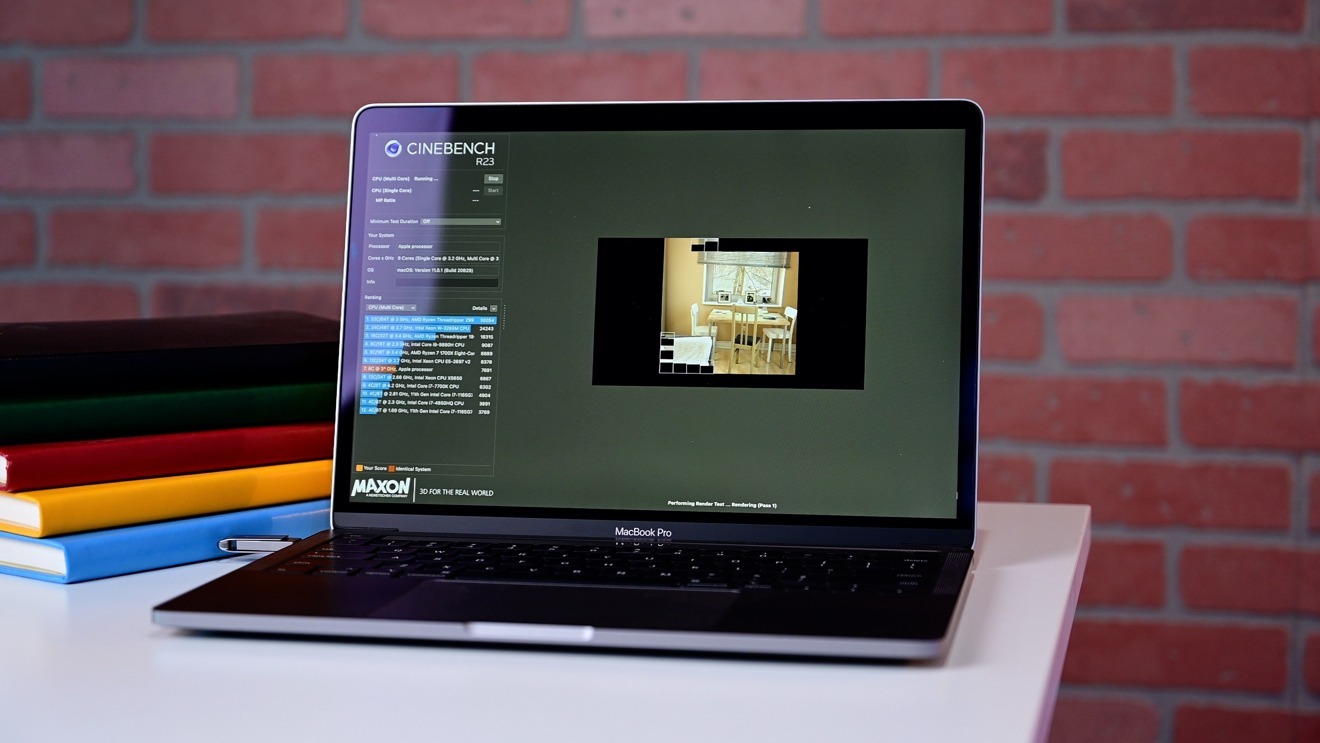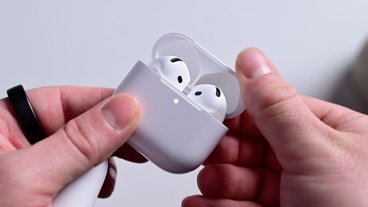Chip producer Intel has claimed its line of processors are still better than Apple's M1, though the comparison between the 11th-generation Intel chips and Apple Silicon shows this under circumstances cherry-picked by the chip manufacturer.
Apple Silicon has been out for a few months, with Mac buyers attracted to the high-performance improvements the M1 had over previous Intel chips Apple used in some of its products. However, the incumbent processor producer is still keen to proclaim its own products are still superior in real-world use.
However, in presentation slides published by Tom's Hardware, the claims over comparable hardware are questionable in some cases.
The slides compare a 13-inch MacBook Pro with M1 and 16 gigabytes of memory against its own internal whitebox, packing the Core i7-1185G7 with four cores, eight threads, and a maximum clock speed of 4.8GHz, supported by 16GB of memory.
The slides generally appear to show Intel's chip as being either comparable or superior to the M1 in various tasks, though with major caveats. For a start, the benchmarks use Intel's "Real-world usage guideline" tests, a collection of trials that don't seem to be actively followed by most other testers.
This includes performing various tests using WebXPRT 3 in Chrome, Microsoft Office 365, and AI-based tools from Topaz Labs. There are also benchmarks that use more commonly used tools, including HandBrake and Adobe Creative Cloud apps, but the initially-presented data stems from the less-used tests.
The results are claimed by Intel to show its chip as "more than 30% faster overall and nearly 3x faster in the online photo enhancement subtest" over M1, while "some functions like PDF export" in Office 365 are "up to 2.3x faster."
Intel's Handbrake tests also appear to completely avoid using hardware-based transcoding on the M1, while it uses Intel's QuickSync hardware routines for the Windows testing.
Despite Apple's focus on machine learning assistance in the M1, Intel attempts to fight back with the odd claim that its chip is 6x faster for the Topaz Labs test than the M1. On the Premiere tests, Intel was supposedly 1.7x faster, while Photoshop and Lightroom Classic tests that relied on Rosetta 2 translation for compatibility resulted in "nearly 1.5x faster" speeds on Intel.
Curiously, under gaming performance, Intel shows more of a range of results, including how Hitman runs better on M1 than its own chip, while showing comparable or better Intel performance on other titles including Borderlands 3 and Shadow of the Tomb Raider. Even more oddly, Intel takes a moment to point out that there's a library of games that "don't run on M1," including Hitman 2, Metro: Exodus, GRID 2019, and "countless more" — which the company counted as zero frames per second on it's comparison.
Intel also claimed the M1 failed to perform eight out of 25 tests it used to represent a "day in the life" for its Evo processor upgrade. These failures included relatively simple tasks, such as "Switch to Calendar in Outlook" and to "Start video conference" in Zoom, which are things that can be easily accomplished even on an M1 Mac.
To try and counter Apple's MacBook Air battery life claims of up to 18 hours in its own tests, Intel instead claims battery life to be 10 hours and 12 minutes under different test conditions, namely the use of a Netflix stream "and tabs" in Safari. Intel suggested it was in the same ballpark as an Acer Swift 5 using the Core i7-1165G7 performing the same task using Chrome, at 10 hours 6 minutes of battery life.
Swipes are also made against Apple for the price and form factor, albeit with Intel forgetting the MacBook Air in the list that it just used in a different comparison, as well as external display limitations and port options.
While a company aims to present itself and its products in the best light, and potentially in a way that brings competitors down in comparison, Intel's presentation indicates it is doing so by jumping through hoops. Cherry-picking test results and using more obscure testing procedures than typical suggests Intel is straining to paint itself in the best light.
Despite assuring it would support Apple's transition to Apple Silicon, Intel is under pressure to maintain its position at the top of the chip food chain. It has been criticized for allowing competitors to sweep in, including Intel's own customers like Apple who are moving to create their own chips, as well as seeing competitors like AMD and Nvidia rise in markets like AI processing.
 Malcolm Owen
Malcolm Owen
![Intel vs M1 productivity benchmarks by Intel [via Tom's Hardware]](https://photos5.appleinsider.com/gallery/40184-77318-iqo4nY26fUteofun3KTLv9-1080-80-xl.jpg)
![Intel vs M1 content creation benchmarks by Intel [via Tom's Hardware]](https://photos5.appleinsider.com/gallery/40184-77319-2sxf9RsZoGUMnBvgiLgCR9-1080-80-xl.jpg)




-xl-m.jpg)


-m.jpg)







 William Gallagher
William Gallagher

 Amber Neely
Amber Neely
 Andrew Orr
Andrew Orr










68 Comments
Injured lion trying to defend it's kingdom. Now there is a new serif in processor town and that is Apple.
Game over for Intel. Apple has always has a vision of the future beyond the cost of the R&D to enable it. It's products (with privacy in mind, solutions in mind, for the customer) generate that R&D revenue. This instead of watching the forecast, quarterly numbers, and complex licensing deals to lock in revenue. Intel missed the iPhone deal and now history has caught up to show that they were wrong. This article is a desperate plea to remain relevant. In two years, Intel will either be a different architecture to remain relevant, or start to fade like IBM.
Secondly when the functions being shown are not frequently performed by users then using the words "real world testing" is disingenuous. Apple's marketing of the M1 line up was careful to show real world scenarios that are frequent pain points for users. Further to this, Apple's marketing also drove home a number of other pain points for users of Intel machines: With the M1 being a cooler and quieter units that feature extraordinary battery life. These are also important real world considerations; after all, what's the point in shaving a few seconds off a process if the computer will only operate for half the time, while giving one's lap a barbecue.
Using cherry picked tests to show that their chip is "comparable" to the M1.
It's the M1. When the M2, M3...come out what are they going to do?